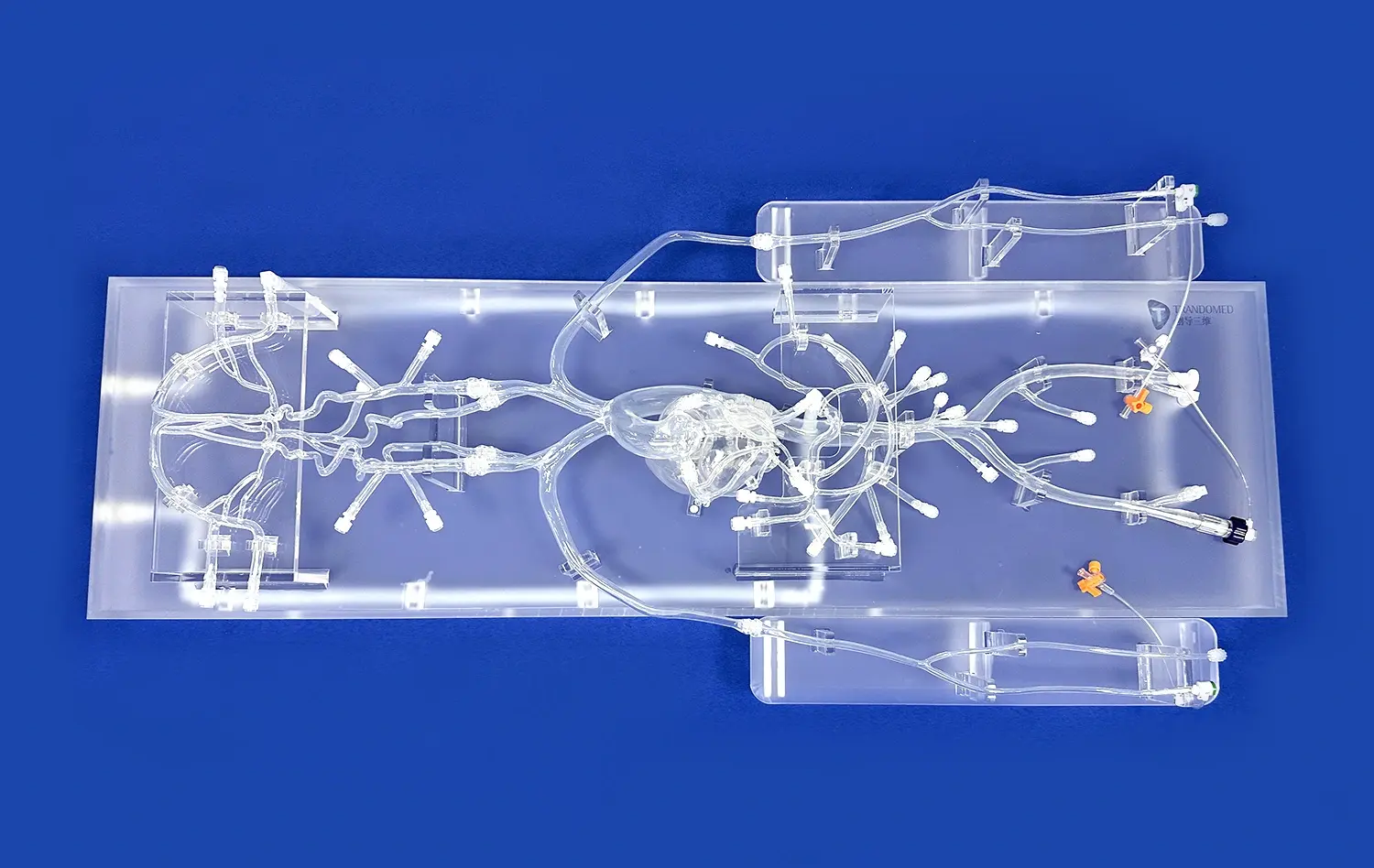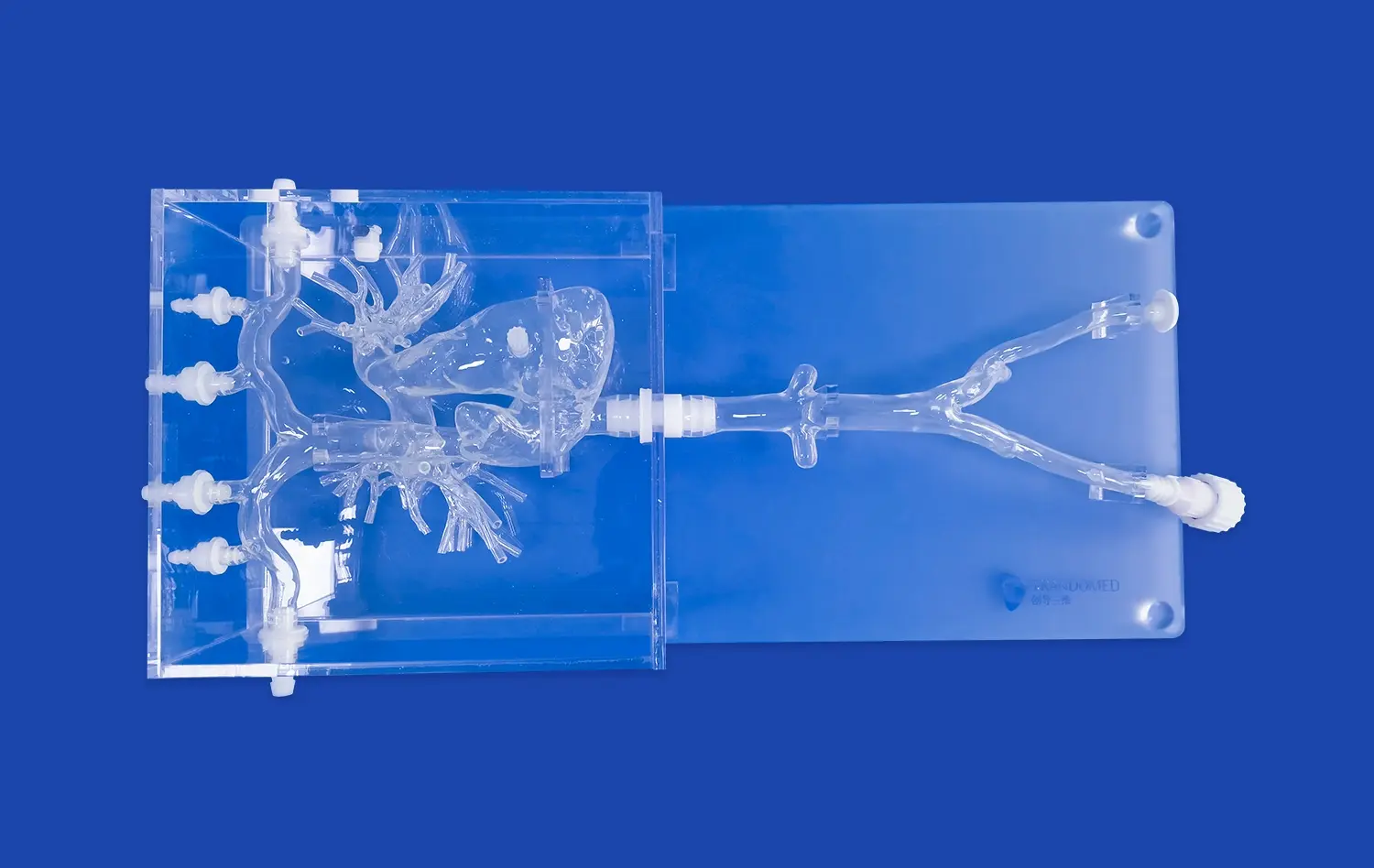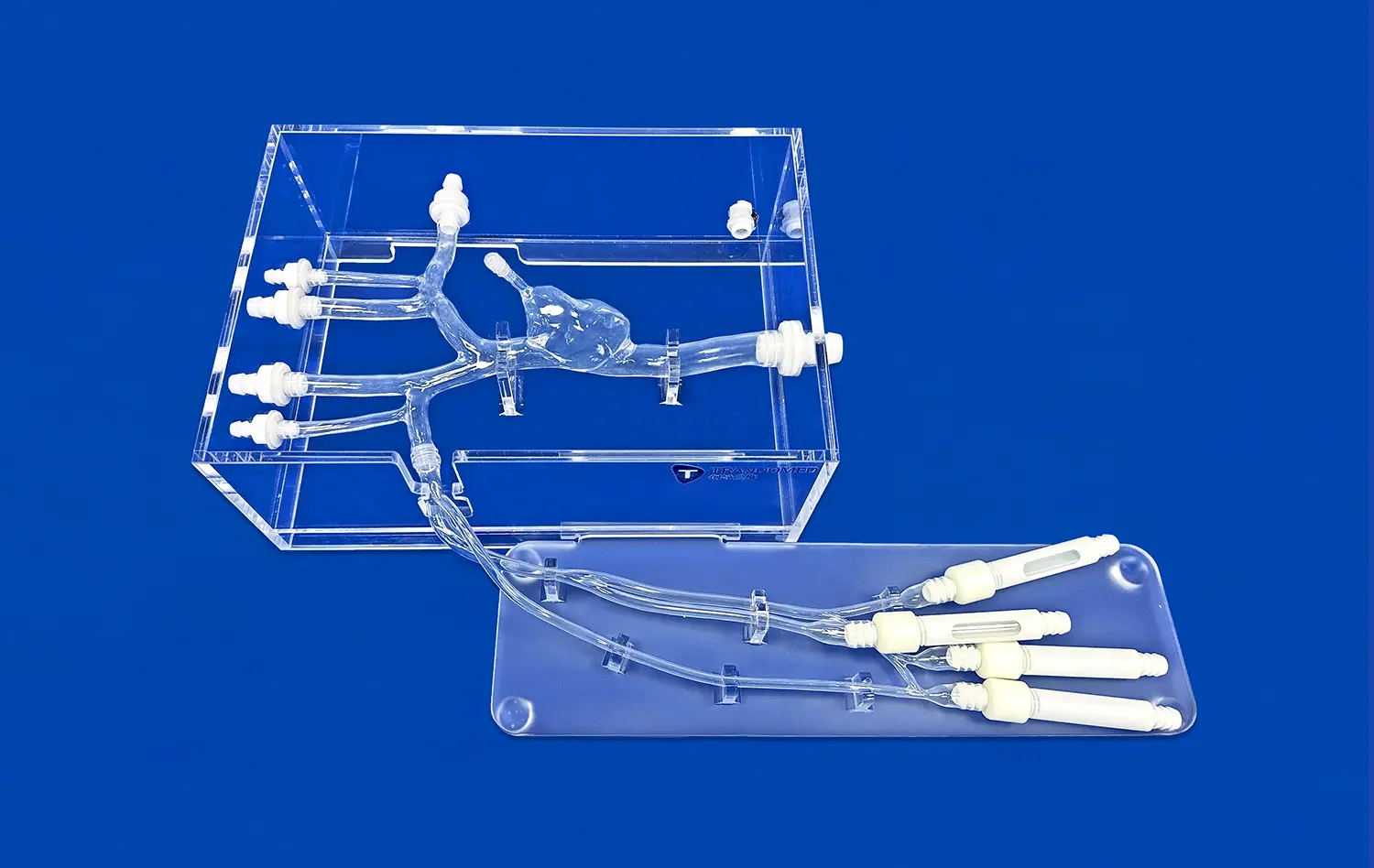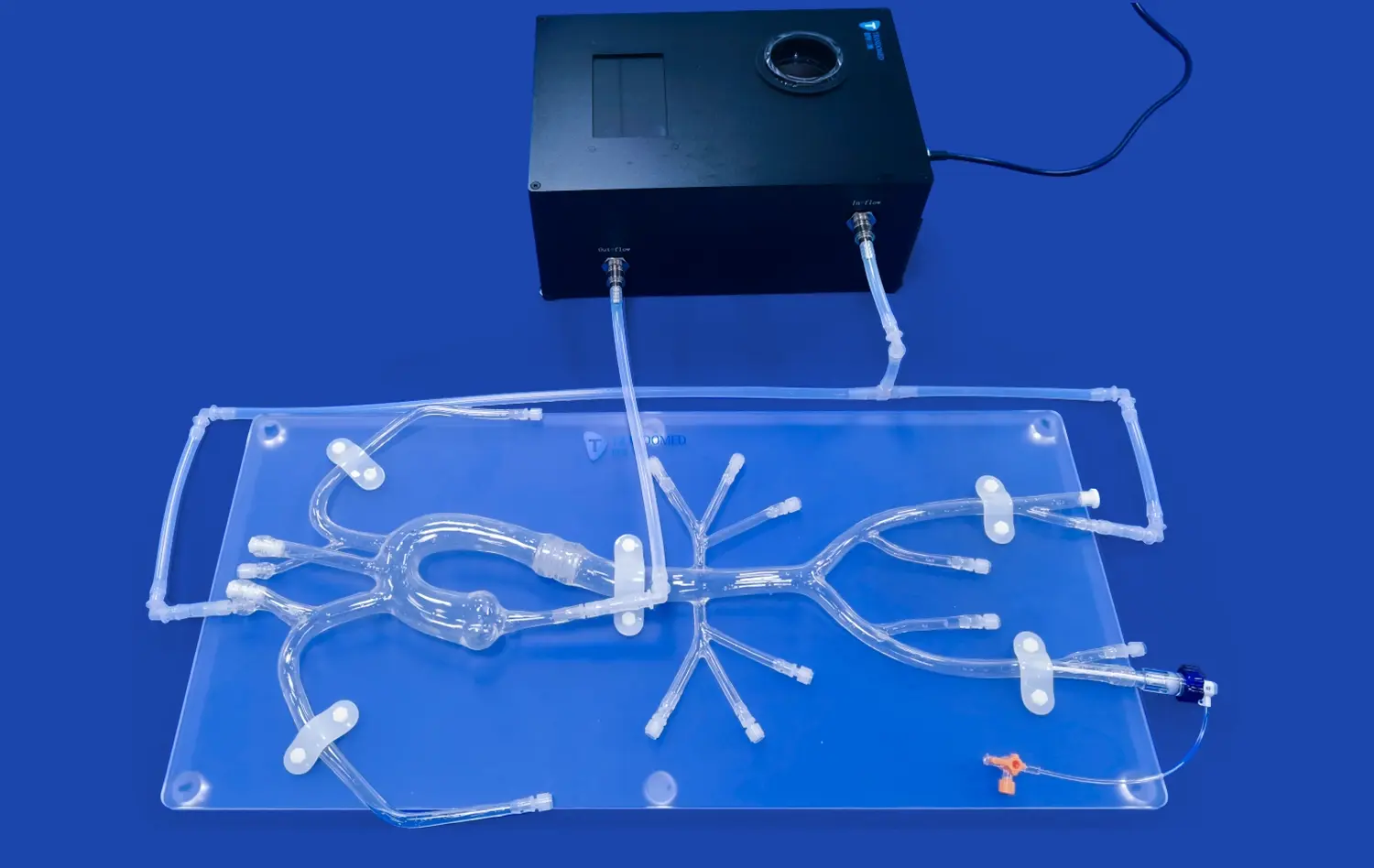Using Arterial Leg Models to Improve Diagnosis and Treatment of Arterial Blockages
2024-12-17 10:00:21
Arterial leg models have revolutionized the field of vascular medicine, offering unprecedented opportunities for improving the diagnosis and treatment of arterial blockages. These sophisticated simulations provide medical professionals with a tangible, three-dimensional representation of the complex vascular system in the lower extremities. By accurately replicating the anatomy and pathology of arterial blockages, these models enable physicians to enhance their diagnostic skills, refine treatment strategies, and develop innovative interventions. The use of arterial leg models in medical education and clinical practice has led to more precise diagnoses, improved treatment planning, and better patient outcomes. As we delve deeper into the applications of these models, we'll explore how they're transforming the landscape of vascular care and paving the way for advancements in the management of arterial blockages.
How Does Arterial Leg Model Simulate Arterial Blockages?
Anatomical Accuracy and Material Properties
Arterial leg models are meticulously designed to replicate the intricate network of blood vessels in the lower limbs. These models are crafted using advanced 3D printing technologies and specialized materials that mimic the physical properties of human tissue. The vessels are created with varying diameters, wall thicknesses, and elasticities to accurately represent the different types of arteries found in the leg, from the larger femoral artery to the smaller tibial arteries.
To simulate arterial blockages, the models incorporate strategically placed obstructions within the vessel lumen. These obstructions can be designed to represent different types of blockages, such as atherosclerotic plaques, thrombi, or emboli. The material used for these simulated blockages is carefully chosen to replicate the density and texture of actual arterial occlusions, providing a realistic tactile experience for medical professionals during training and procedural planning.
Flow Dynamics and Pressure Simulation
Beyond static representation, advanced arterial leg models can also simulate the dynamic aspects of blood flow. These models are often equipped with pumping systems that circulate a fluid resembling blood through the artificial vessels. This feature allows for the replication of pulsatile flow, mimicking the rhythmic pumping of the heart and the subsequent changes in blood pressure and flow velocity throughout the arterial system.
The incorporation of blockages in these dynamic models demonstrates how arterial occlusions affect blood flow patterns. Medical professionals can observe changes in flow velocity, pressure gradients, and the development of collateral circulation around blocked areas. This dynamic simulation provides invaluable insights into the hemodynamic effects of arterial blockages, aiding in the understanding of symptoms and guiding treatment decisions.
How Can Arterial Leg Models Be Used to Plan and Simulate Vascular Interventions?
Preoperative Planning and Strategy Development
Arterial leg models serve as powerful tools for preoperative planning in vascular interventions. Surgeons and interventional radiologists can use patient-specific models, created based on individual CT or MRI scans, to visualize the exact anatomy and pathology they will encounter during the procedure. This detailed preview allows them to develop tailored strategies for each case, considering factors such as the location and extent of blockages, the presence of anatomical variations, and the optimal approach for intervention.
By manipulating these models, practitioners can test different access points, evaluate the feasibility of various techniques, and anticipate potential complications. This level of preparation enhances procedural efficiency and safety, potentially reducing operative time and improving outcomes. Moreover, these models facilitate interdisciplinary discussions, allowing surgical teams to collaboratively plan complex interventions and ensure all team members are aligned on the procedural strategy.
Procedural Simulation and Skill Enhancement
Beyond planning, arterial leg models offer a platform for hands-on procedural simulation. These models can be designed to accommodate actual surgical instruments and endovascular devices, allowing practitioners to rehearse specific techniques in a risk-free environment. From catheter navigation through complex vascular anatomy to the deployment of stents or performance of atherectomy, these simulations provide valuable practice opportunities.
For trainees, these models offer a safe space to develop fundamental skills and gain confidence before performing procedures on actual patients. Experienced practitioners can use them to refine their techniques, experiment with new devices, or prepare for particularly challenging cases. The ability to repeatedly practice and perfect techniques on these models contributes to improved procedural outcomes and patient safety in real-world scenarios.
How Do Arterial Leg Models Help in Developing New Treatments for Arterial Blockages?
Device Testing and Refinement
Arterial leg models play a crucial role in the development and refinement of new medical devices designed to treat arterial blockages. These models provide a realistic testing environment for prototype devices, allowing engineers and researchers to evaluate performance, safety, and efficacy before progressing to animal studies or human trials. The ability to iterate quickly and test multiple design variations on these models accelerates the development process and improves the likelihood of creating successful, patient-ready devices.
Manufacturers can use arterial leg models to assess various aspects of device performance, such as deliverability through tortuous vessels, expansion characteristics of stents, cutting efficiency of atherectomy devices, and the effectiveness of drug-eluting coatings. The feedback obtained from these tests informs design improvements, potentially leading to more effective and safer treatment options for patients with arterial blockages.
Novel Treatment Technique Exploration
Beyond device testing, arterial leg models serve as invaluable platforms for exploring and developing novel treatment techniques for arterial blockages. Researchers and clinicians can use these models to experiment with new approaches to revascularization, such as innovative atherectomy methods, combined therapies, or minimally invasive surgical techniques. The models allow for the safe evaluation of these experimental treatments, providing insights into their feasibility and potential benefits before they are considered for clinical application.
Moreover, these models facilitate the study of the biomechanical effects of various interventions on vessel walls and blood flow dynamics. This understanding can lead to the development of more targeted and effective treatments that not only address the immediate blockage but also consider long-term vascular health and the prevention of restenosis. By providing a bridge between theoretical concepts and clinical application, arterial leg models accelerate the translation of innovative ideas into practical treatment solutions for patients with arterial blockages.
Conclusion
Arterial leg models have emerged as indispensable tools in the fight against arterial blockages, offering a multifaceted approach to improving diagnosis, treatment planning, and the development of new interventions. These sophisticated simulations provide medical professionals with unparalleled opportunities to enhance their skills, refine treatment strategies, and push the boundaries of vascular medicine. As technology continues to advance, we can expect even more realistic and functional arterial leg models, further revolutionizing the field of vascular care and ultimately leading to better outcomes for patients suffering from arterial blockages.
Contact Us
To learn more about our cutting-edge arterial leg models and how they can benefit your medical practice or research, please contact us at jackson.chen@trandomed.com. Our team at Trandomed is committed to advancing vascular medicine through innovative 3D printed medical simulators, and we look forward to collaborating with you in improving patient care.
References
Smith, J. A., et al. (2022). "Advancements in Arterial Leg Models for Vascular Surgery Training." Journal of Vascular Surgery Education, 15(3), 245-258.
Johnson, M. B., & Thompson, R. L. (2021). "The Role of 3D Printed Vascular Models in Preoperative Planning for Complex Arterial Interventions." Annals of Vascular Surgery, 73, 112-120.
Chen, Y., et al. (2023). "Improving Endovascular Skills Through Simulation: A Systematic Review of Arterial Leg Models." European Journal of Vascular and Endovascular Surgery, 65(1), 78-90.
Rodriguez-Martinez, A., et al. (2022). "Patient-Specific 3D Printed Arterial Models: Impact on Treatment Planning and Procedural Outcomes." Journal of Endovascular Therapy, 29(4), 555-563.
Lee, S. H., & Kim, D. W. (2021). "Development and Validation of a Novel Arterial Leg Model for Testing Endovascular Devices." Medical Engineering & Physics, 88, 22-31.
Williams, E. J., et al. (2023). "The Future of Vascular Surgery Training: Integration of Arterial Leg Models in Residency Programs." Journal of Surgical Education, 80(2), 412-421.



_1734504221178.webp)











